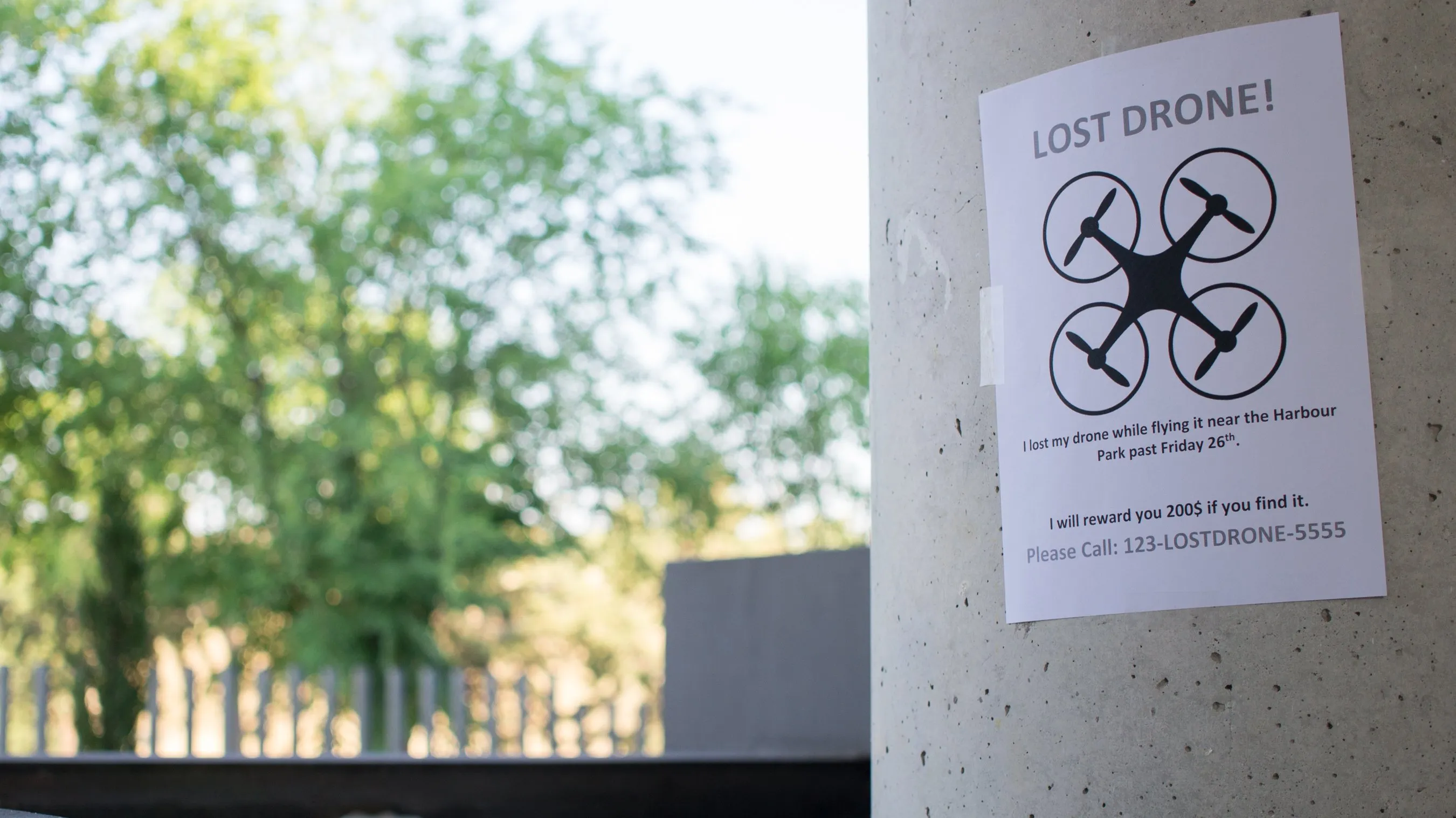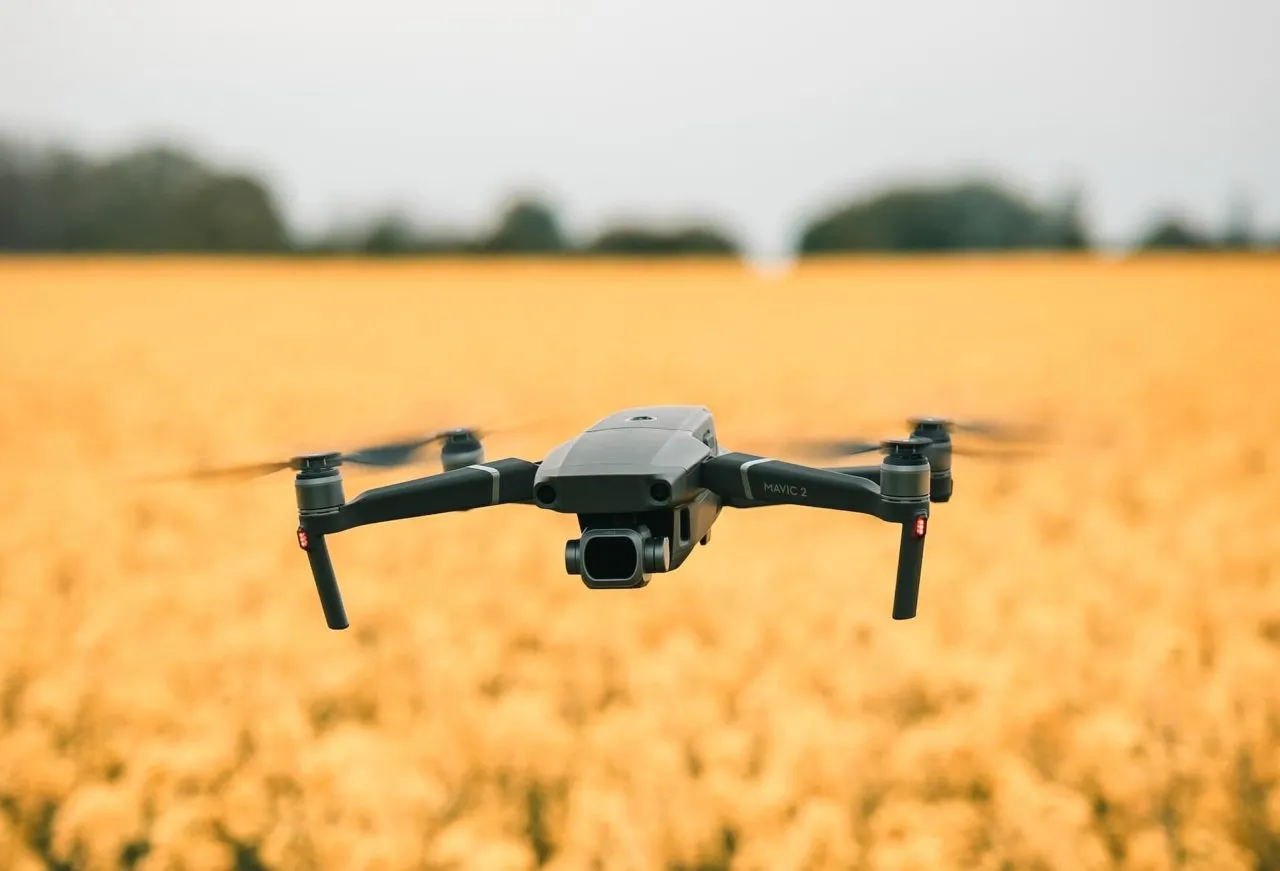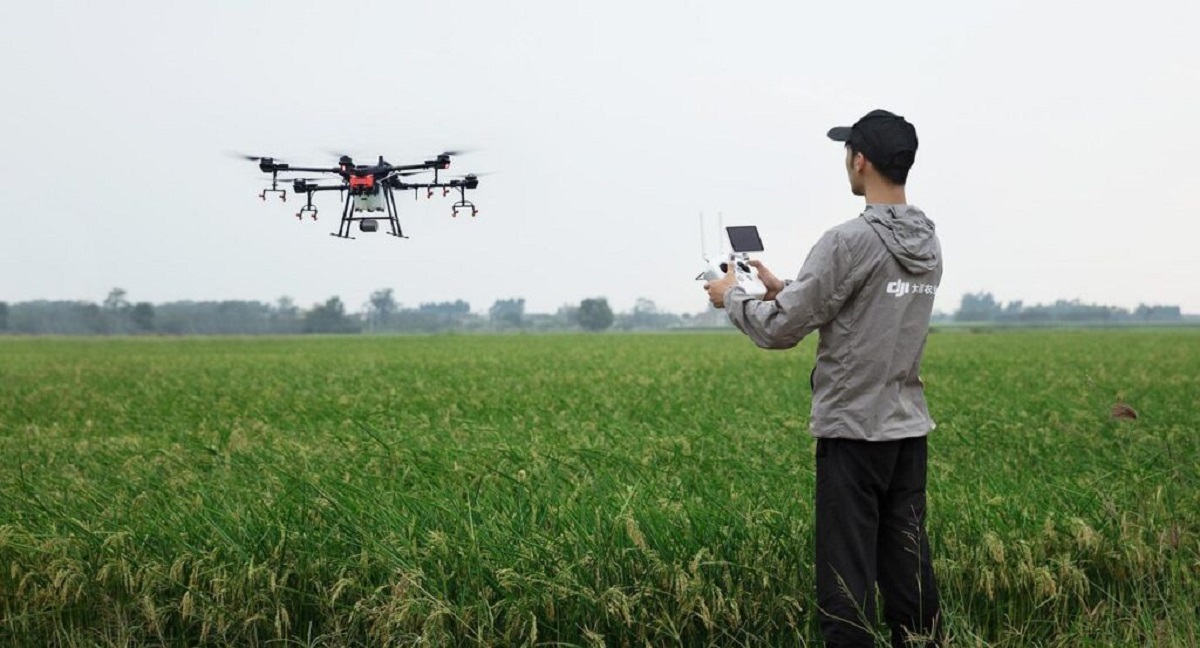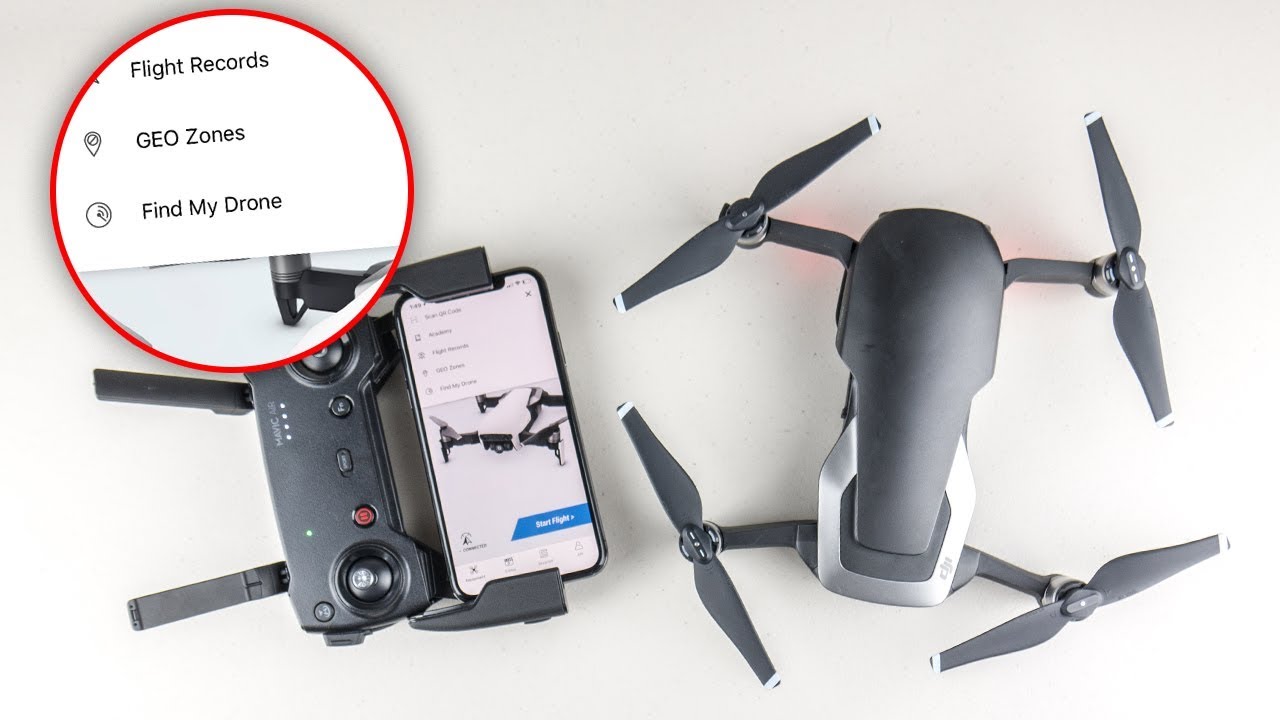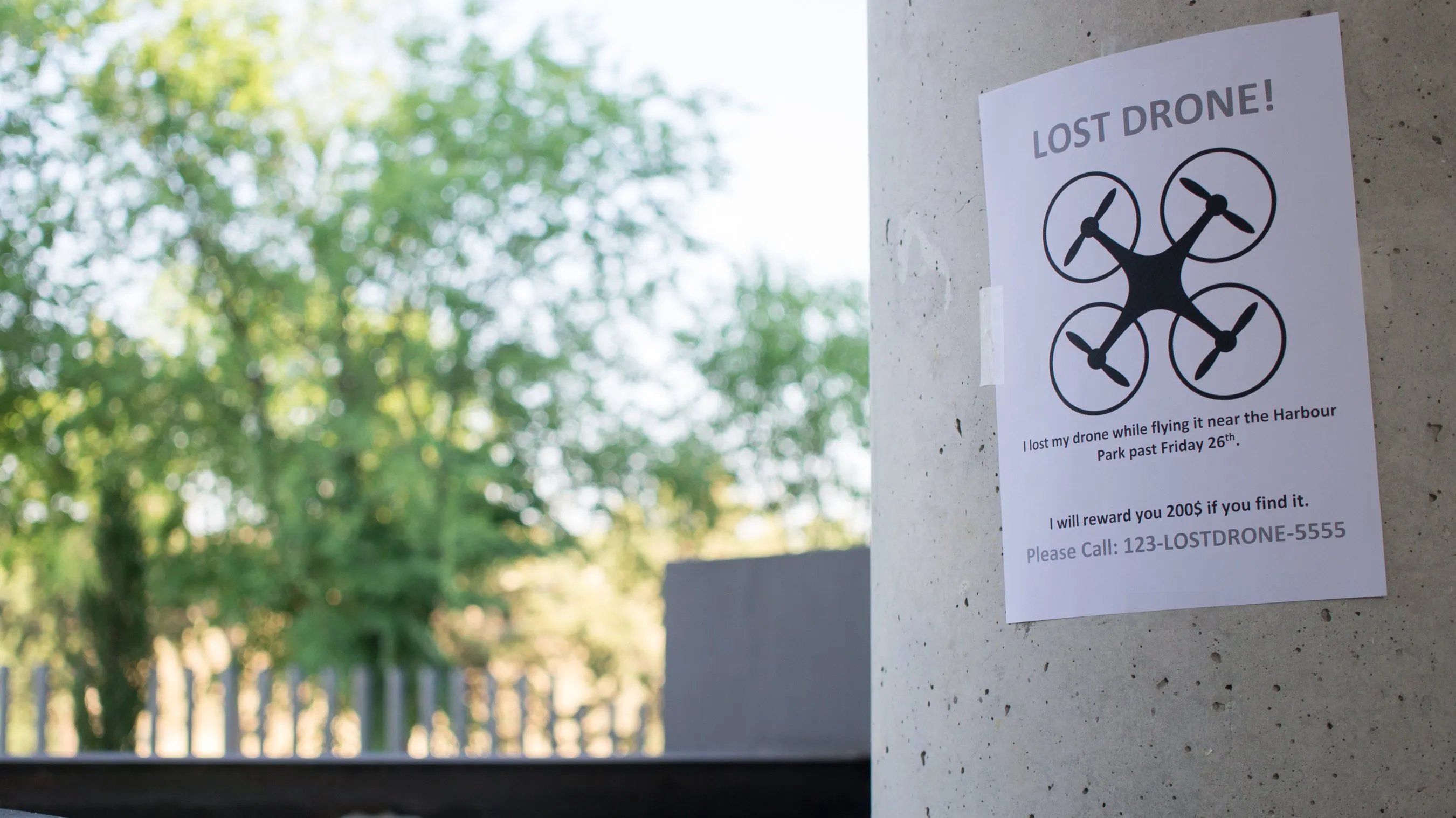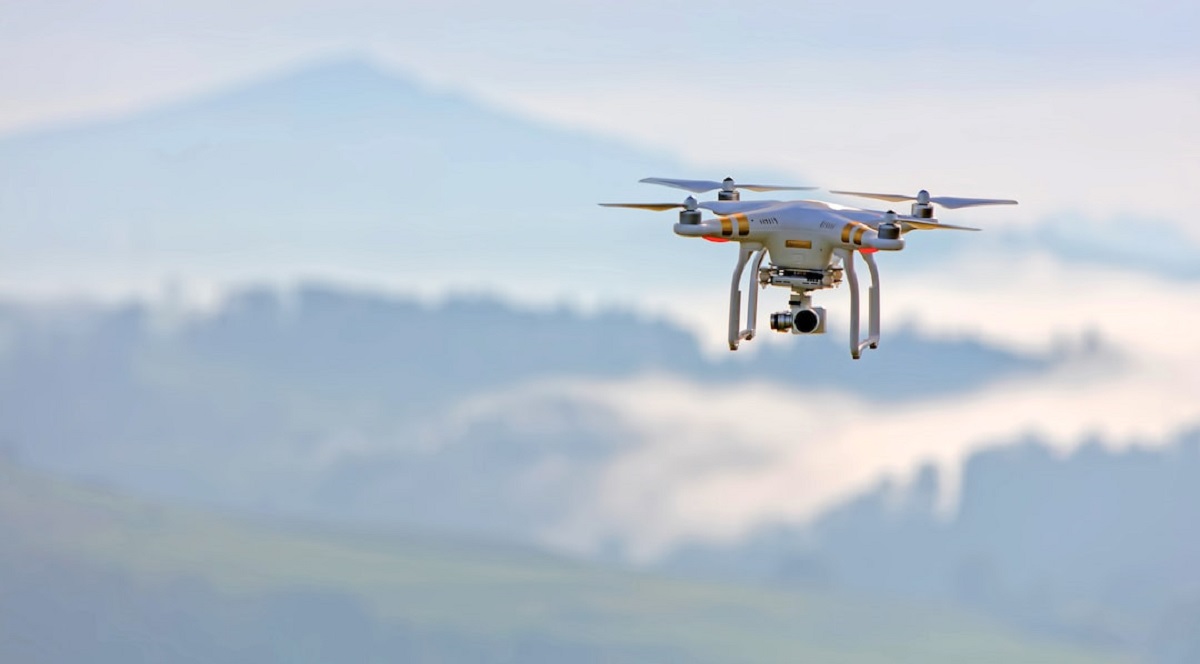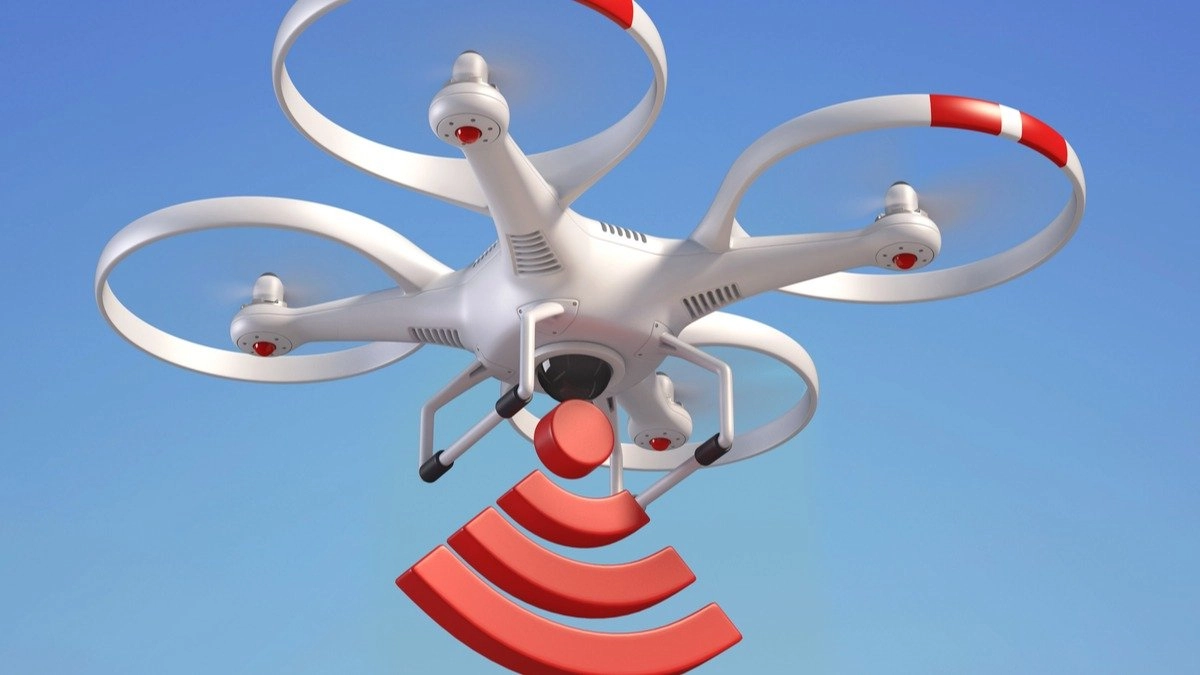Introduction
Losing a drone can be a disheartening experience for any drone enthusiast. Whether it accidentally flew out of range, got caught in strong winds, or even crashed in an unknown location, the thought of losing such a valuable piece of equipment can be frustrating. However, there are several steps you can take to increase your chances of finding your lost drone.
As an avid drone user, I have had my fair share of drone-finding adventures, and in this article, I will share some effective strategies that can help you locate your lost drone. While there is no guarantee of recovery, these methods have proven to be successful for many drone owners.
It is important to note that each drone model may have specific features that can aid in recovery. Some drones are equipped with GPS tracking systems, return-to-home functions, and other advanced technologies that can assist in finding a lost drone. However, even if your drone doesn’t have these features, there are still steps you can take to increase your chances of locating it.
Before we delve into specific strategies, it’s important to remain calm and approach the situation with a clear mind. Panicking or becoming overwhelmed can hinder your ability to think clearly and make rational decisions. Take a deep breath, gather your thoughts, and let’s begin the process of finding your lost drone.
Understanding the Drone’s Flight Range
One of the first things to consider when trying to find a lost drone is understanding its flight range. Every drone has a maximum distance it can fly from the controller before losing its connection. This range can vary depending on the drone model and any potential signal interference in the area.
Start by reviewing the specifications of your specific drone model. Check the manufacturer’s website or refer to the user manual to identify the maximum flight range. Keep in mind that this range may be affected by factors such as weather conditions and obstacles between the drone and the controller.
If your drone has a companion mobile app, utilize it to monitor the live distance and signal strength between the drone and the controller. This can give you an idea of how far the drone could have potentially gone. Some drone apps even provide a map with a flight path history, allowing you to see the drone’s trajectory before it was lost.
It’s important to note that if your drone was near its maximum flight range or if it was flying in an area with potential signal interference, it may have responded differently during the loss of connection. Depending on the drone’s settings, it might have attempted to automatically return to its takeoff point or initiated an emergency landing.
For drones equipped with a return-to-home feature, check the settings and ensure it was enabled before the flight. This feature instructs the drone to return to its original takeoff location when it loses connection with the controller. If the drone was within range, there is a possibility that it automatically returned to where it was launched.
Understanding the flight range of your drone and familiarizing yourself with its features is crucial for effectively searching for a lost drone. By having this knowledge, you can narrow down potential search areas and focus on locations within the drone’s flight boundaries.
Search the Last Known Location
When attempting to locate a lost drone, the first step is to search the last known location where the drone was seen or flew out of range. This provides a starting point for your search efforts. Here are some key steps to follow when searching the last known location:
- Retrace your steps: Think back to the moment when you last flew the drone and try to recall the exact location. If you have any photographs or videos taken during the flight, review them to pinpoint the area. Look for landmarks, distinct features, or any other notable visual cues that can help you identify the location.
- Use GPS data: Check if your drone or controller logs GPS data. Some drones automatically record this information, which can be immensely helpful in determining the drone’s last known coordinates. Use this data to mark the location on a map or input the coordinates into GPS navigation devices or smartphone apps.
- Do a thorough search: Once you have the last known location, physically visit the area and search for any signs of the drone. Look for trees, rooftops, or other surfaces where it might have landed or gotten stuck. Pay close attention to areas with tall grass, bushes, or bodies of water, as the drone may have fallen in these locations.
- Ask for permission: If the last known location happens to be on private property, seek permission from the owner before conducting a search. Explain the situation and request access to search for the lost drone. It’s essential to respect the property rights of others and avoid trespassing.
- Organize a search party: If the last known location is extensive or difficult to search alone, consider enlisting the help of friends, family, or fellow drone enthusiasts. A coordinated search effort can cover more ground and increase the chances of locating the drone. Assign specific areas to individuals and communicate effectively to avoid duplication of efforts.
By thoroughly searching the last known location, you maximize the chances of finding your lost drone. Remember to remain patient and meticulous during the search, as the drone may be hidden amongst foliage or in hard-to-reach spots.
Use the Drone’s Return-to-Home Feature
If your drone is equipped with a return-to-home (RTH) feature, it can greatly aid in the search and recovery process. This feature instructs the drone to automatically fly back to its takeoff point when the connection between the drone and the controller is lost or when the battery is running low. Here’s how you can utilize the drone’s return-to-home feature to find your lost drone:
- Check if the feature was enabled: Review your drone’s settings or consult the user manual to ensure that the return-to-home feature was enabled prior to the flight. If it was disabled, the drone will not attempt to return to its takeoff location in the event of a disconnection.
- Check the controller: If the drone has a remote controller with a display screen, it may provide information on the drone’s return flight. Look for updates about the return-to-home process, including any status messages or indications that the drone has successfully initiated the return.
- Inspect the takeoff point: If the return-to-home feature was active and the drone was within range, head to the location where the drone was launched. Scan the surroundings, especially the immediate vicinity of the takeoff point, for any signs of the returning drone. It may have landed nearby or encountered obstacles during its journey back home.
- Use the drone’s GPS coordinates: If you have access to the drone’s GPS coordinates during its return flight, input that information into a GPS device or smartphone app. This can help you navigate to the estimated landing area. Make sure to account for any potential deviations caused by wind or other factors.
- Search the landing area: Once you reach the estimated landing area, conduct a thorough search to locate the drone. Pay attention to trees, rooftops, tall grass, or other areas where the drone might have landed or become entangled. Use your eyes, binoculars, or even a drone locating device to help identify the drone’s whereabouts.
- Expand the search radius: If you do not find the drone in the estimated landing area, expand your search radius gradually. The drone’s return-to-home accuracy may vary based on factors such as GPS signal strength and obstacles along the flight path. Therefore, it’s important to widen your search area while keeping the last known location as a reference point.
The return-to-home feature can significantly increase the likelihood of finding your lost drone. However, keep in mind that environmental factors, signal interference, or other unforeseen circumstances may impact the drone’s ability to return accurately. Therefore, it is essential to combine this approach with other search methods to cover all possible areas where the drone might have landed.
Utilize GPS Tracking Devices
Another effective strategy to find a lost drone is to utilize GPS tracking devices. These small trackers can be attached to your drone to provide real-time location updates. By using GPS technology, you can track the drone’s movements and pinpoint its exact location, even if it is lost or out of sight. Here’s how you can utilize GPS tracking devices to aid in the search and recovery of your drone:
- Choose a suitable GPS tracker: Research and select a GPS tracking device that is compatible with your drone model. There are various options available, ranging from dedicated drone trackers to general-purpose GPS trackers that can be attached to the drone.
- Attach the tracker securely: Follow the manufacturer’s instructions to securely attach the GPS tracker to your drone. It should be firmly attached and not interfere with the aircraft’s flight or stability. Ensure that the tracker’s antenna has a clear view of the sky to receive GPS signals accurately.
- Activate the tracking device: Activate the GPS tracker according to the manufacturer’s instructions. This may involve setting up an account, connecting the device to a mobile app or website, and configuring the tracking settings.
- Monitor the tracker’s location: Once the GPS tracking device is activated, you can monitor the drone’s location in real-time using the associated mobile app or website. It provides a visual representation of the drone’s movements on a map, allowing you to track its path and determine its current position.
- Utilize geofence features: Many GPS tracking devices offer geofencing capabilities, which allow you to set virtual boundaries for the drone’s flights. If the drone moves beyond these predefined boundaries, you will receive alerts on your mobile device. This feature can be particularly helpful if you suspect that the drone has flown outside of its intended area.
- Follow the tracker’s location: As you receive updates on the tracker’s location, follow the path of the drone on the map and make note of any significant landmarks or areas where it may have landed. Use this information to narrow down your search area and focus on potential recovery sites.
- Collaborate with local authorities or drone communities: In some cases, tracking devices can provide real-time location updates to others as well. Reach out to local authorities or drone communities and provide them with access to the tracking information. They can assist in the search efforts and help locate the lost drone.
GPS tracking devices serve as invaluable tools in the search for a lost drone. By utilizing these devices, you can track the drone’s location and significantly enhance your chances of recovering it.
Seek Assistance from Locals or Drone Communities
When attempting to locate a lost drone, reaching out for assistance from locals or fellow drone enthusiasts can greatly increase your chances of finding it. These individuals are familiar with the area and may have experience in recovering lost drones. Here’s how you can seek assistance from locals or drone communities:
- Ask nearby residents: Start by approaching residents or business owners near the last known location of your drone. Inform them about the situation and inquire if they have seen or found a drone matching the description. People in the vicinity may have noticed or recovered the drone and can provide valuable information.
- Visit local parks or open spaces: Public parks, open fields, or recreational areas are popular locations for flying drones. Make a visit to these spaces and talk to people who frequent them. They may have witnessed the drone’s flight or have knowledge of any recent drone sightings.
- Join drone forums or online communities: There are numerous online communities and forums dedicated to drones and drone enthusiasts. Join these communities and explain your situation, providing details about the lost drone and its last known location. Fellow drone owners may offer advice, share similar experiences, or even assist in the search efforts.
- Attend local drone events or meetups: Check if there are any local drone events, meetups, or flying clubs in your area. Attend these gatherings and network with other drone enthusiasts. Share your story and seek help from individuals who are knowledgeable about the local geography and may have relevant insights or suggestions.
- Utilize social media platforms: Social media platforms are an excellent way to reach a wide audience. Post about your lost drone on your social media accounts, along with a description, pictures, and last known location. Ask friends and followers to share your post to increase its reach. You never know who in your network or extended network may have information that can lead to the recovery of your drone.
- Offer a reward: Consider offering a small reward as an incentive for people to help locate your drone. This can motivate individuals to keep an eye out or actively participate in the search efforts. Make sure to specify the reward details in your communications and be prepared to fulfill your commitment if someone aids in the recovery of your drone.
Don’t underestimate the power of community support when it comes to finding a lost drone. By seeking assistance from locals or drone communities, you tap into a network of individuals who may have the knowledge, experience, or connections to help you locate your missing drone.
Investigating Possible Crash Sites
When a drone goes missing, investigating possible crash sites can be a crucial step in the search and recovery process. While it may not be the most desirable scenario, understanding where the drone could have potentially crashed can narrow down your search area. Here’s how you can investigate possible crash sites:
- Assess flight conditions: Recall the flight conditions and any potential obstacles encountered during the drone’s flight. Strong winds, bird activity, or other factors could have caused the drone to veer off course or lose control. Consider these conditions when identifying potential crash sites.
- Look for landmarks: If you have video footage or photographs from the flight, meticulously study them to identify any noticeable landmarks or identifiable features in the surroundings. These visuals can help you narrow down possible crash locations.
- Search nearby trees and branches: If the drone crashed in a wooded area, visually inspect any tall trees or branches in the vicinity. Drones can easily get tangled up in dense foliage, which can prevent them from falling to the ground.
- Inspect bodies of water: If the potential crash site is near a lake, river, or other bodies of water, check the water’s surface and shoreline for any signs of the drone. Drones may float on the water or get caught in vegetation near the shoreline.
- Utilize binoculars or a drone locating device: Binoculars can help you scan large areas or survey hard-to-reach locations from a distance. Additionally, there are specialized drone locating devices available that use radio frequency or other methods to detect the presence of a drone nearby. These can be beneficial in pinpointing a crash site.
- Coordinate with local authorities or drone recovery services: If you have exhausted your efforts in identifying possible crash sites without success, consider involving local authorities or professional drone recovery services. They may have the expertise and resources to conduct a more thorough and organized search in challenging or inaccessible areas.
- Document and mark potential crash sites: As you investigate possible crash sites, document and mark each location. Take photographs, note the GPS coordinates, and make a record of any significant observations. This documentation will assist in organizing search efforts and relaying information to others who may be assisting in the recovery process.
Investigating possible crash sites requires careful analysis and thorough exploration of the drone’s flight path. Remember to exercise caution and prioritize safety while searching in potentially hazardous or difficult-to-reach areas.
Check Local Authorities or Lost and Found Services
If you haven’t been successful in locating your lost drone through other means, reaching out to local authorities or utilizing lost and found services can be a viable option. These channels can help you connect with individuals who handle lost items and may have information about your missing drone. Here’s how you can check local authorities or lost and found services to aid in the search for your drone:
- Contact local law enforcement agencies: Reach out to the local police department or relevant law enforcement agencies in the area where your drone was lost. Provide them with a detailed description of your drone, its last known location, and any identifiable features that can assist in its recovery. They may have received reports of found drones or be able to guide you to the appropriate department.
- Inquire at municipal offices or community centers: Local government offices or community centers often have lost and found departments or services. Visit these establishments or contact them via phone or email to inquire about any drones that may have been turned in or reported as lost. Provide them with the necessary information to aid in their search.
- Check online lost and found platforms: There are several online platforms dedicated to lost and found items. Conduct a search on these platforms using relevant keywords like “lost drone” or “found drone” along with the location where the drone was lost. Browse through listings, post your own lost item notice, or contact individuals who have reported finding a drone matching your description.
- Post notices at local community bulletin boards: Many communities have physical bulletin boards where residents can post advertisements or notices. Create a simple flyer with a picture and description of your lost drone, including your contact information. Distribute these flyers to local community centers, supermarkets, or other public spaces where bulletin boards are available.
- Utilize online classified platforms: Online classified platforms such as Craigslist or local buy/sell groups on social media can be useful for posting information about a lost drone. Create a detailed listing with pictures and essential details, and share it across relevant groups or platforms. Be cautious when interacting with individuals and follow safety guidelines when arranging meetings or exchanges.
- Keep checking periodically: Even after initially contacting local authorities or lost and found services, continue to follow up periodically. Sometimes, it takes time for lost items to be reported or turned in. By staying engaged and regularly checking for updates, you increase the chances of finding your lost drone.
Checking with local authorities or lost and found services can provide additional avenues for locating your lost drone. Be proactive and persistent in your search efforts, as cooperation and information sharing from these sources can significantly contribute to the recovery process.
Spread the Word on Social Media and Online Forums
One of the fastest and most effective ways to gather information and reach a wider audience in your search for a lost drone is by spreading the word on social media and online forums. These platforms provide a vast network of individuals who can help you locate your missing drone. Here’s how you can utilize social media and online forums to aid in the search:
- Create a post: Craft a detailed post explaining the situation and providing essential information about your lost drone. Include details such as the model, last known location, distinguishing features, and any other pertinent information. Add relevant hashtags such as #LostDrone or #FindMyDrone to increase the visibility of your post.
- Share photographs or videos: Attach clear photographs or videos of your drone to the post. Visuals can make it easier for others to recognize the drone if they have come across it or if someone within their network has found it.
- Join drone-specific groups and communities: Look for online forums, social media groups, or communities specifically dedicated to drones. These platforms often have active members who are knowledgeable about drones and may have encountered similar situations. Join these groups and share your story to seek their help and guidance.
- Reach out to friends and family: Request your friends and family to share your post on their social media accounts. This multiplies the chances of your post reaching a wider audience and increases the likelihood of finding individuals who may have information about your lost drone.
- Tag relevant accounts and pages: If there are any local drone clubs, retailers, or drone enthusiasts’ social media accounts or pages, tag them in your post or reach out to them through direct messages. They may have followers who are active in the drone community and could provide valuable insights or assistance.
- Engage with comments and messages: Regularly monitor the comments and messages on your social media post. Respond promptly to any inquiries or suggestions from individuals who are trying to assist you. Engaging with commenters helps maintain their interest and increases the likelihood of receiving helpful information.
- Set up alerts and notifications: Make use of social media features that allow you to set up alerts or notifications for specific keywords or hashtags related to lost drones. This ensures that you are immediately notified if someone posts about finding a drone or if others share information relevant to your search.
Spreading the word on social media and online forums empowers you to leverage the collective knowledge and network of people who are passionate about drones. By tapping into this community, you increase the chances of finding someone who may have seen or come across your lost drone.
Consider Professional Help from Drone Recovery Services
If your efforts to locate your lost drone have been unsuccessful, it may be worth considering professional help from drone recovery services. These specialized services have the expertise, experience, and equipment to assist in the search and recovery of lost drones. Here are some reasons why you should consider seeking professional help:
- Expertise and knowledge: Drone recovery services specialize in locating and retrieving lost drones. They have extensive knowledge of various drone models, flight characteristics, and recovery techniques. Their expertise can help in assessing the situation, determining probable locations, and implementing effective recovery strategies.
- Advanced technology and equipment: Drone recovery services are equipped with advanced technology and specialized equipment specifically designed for locating and recovering lost drones. They may utilize drones with thermal imaging, GPS tracking devices, or even deploy specialized recovery tools to access hard-to-reach areas.
- Insurance coverage: Some professional drone operators and recovery services provide insurance coverage for lost or damaged drones. This can provide peace of mind as they work to locate and retrieve your drone. It is advisable to inquire about insurance coverage and any applicable terms before engaging their services.
- Access to drone networks: Professional drone recovery services often have well-established networks within the drone community. They may have connections with other drone operators, enthusiasts, or recovery specialists who can provide additional assistance or information in locating your lost drone.
- Thorough and organized search efforts: Drone recovery services employ systematic search methods to cover all possible areas where the lost drone may be located. They may conduct aerial surveys, utilize GPS coordinates, and investigate potential crash sites to maximize the chances of a successful recovery.
- Mitigation of risks and challenges: Searching for a lost drone can involve various risks and challenges, such as accessing remote or hazardous areas, dealing with inclement weather conditions, or navigating difficult terrains. Professional drone recovery services are experienced in handling such situations safely and efficiently.
- Consultation and guidance: Even if you ultimately decide not to engage their recovery services, professional drone recovery specialists can provide valuable consultation and guidance. They can advise you on best practices for locating a lost drone, suggest alternative search methods, or offer insights based on their experience.
It is important to note that enlisting the services of a professional drone recovery service may involve costs. However, the value of their expertise, resources, and focused search efforts can significantly increase the likelihood of locating your lost drone.
Before engaging any professional services, conduct research, read reviews, and inquire about their rates, terms, and success rates in similar recovery cases. Ensure that you have a clear understanding of the services they provide and any associated fees or charges.
Conclusion
Losing a drone can be a frustrating experience for any drone enthusiast, but there are steps you can take to increase your chances of finding your lost drone. By implementing the strategies outlined in this article, including understanding the flight range, searching the last known location, utilizing the drone’s return-to-home feature, using GPS tracking devices, seeking assistance from locals or drone communities, investigating possible crash sites, checking local authorities or lost and found services, spreading the word on social media and online forums, and considering professional help from drone recovery services, you can improve your chances of locating your lost drone.
It is important to remain calm and focused during the search process. Take advantage of technology, such as GPS tracking devices and drone locating tools, to aid in the search. Engage with local authorities, drone communities, and social media platforms to gather information and widen your network of search support. Utilize professional drone recovery services if your search efforts have been unsuccessful or if you need specialized assistance and expertise.
Remember, the recovery of a lost drone is not guaranteed. Factors such as environmental conditions, signal interference, and other unforeseen circumstances can impact the chances of locating your drone. However, by following the strategies outlined in this article and approaching the search process with patience, persistence, and a proactive mindset, you enhance the possibility of reuniting with your beloved drone.







